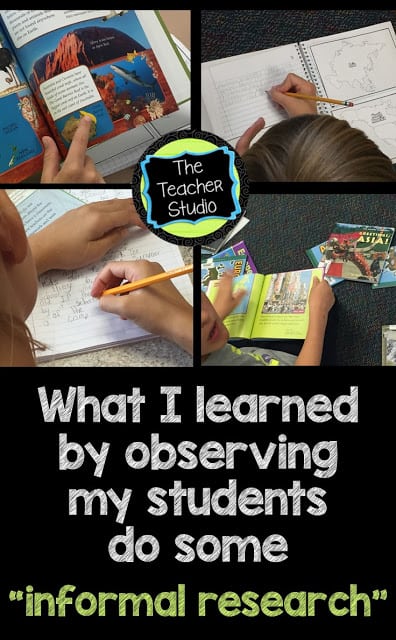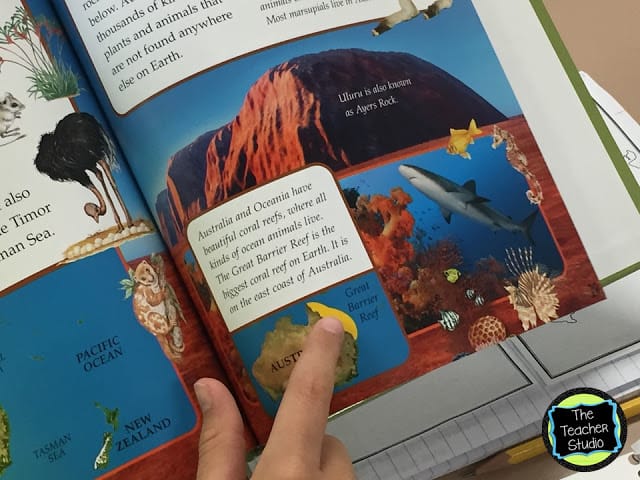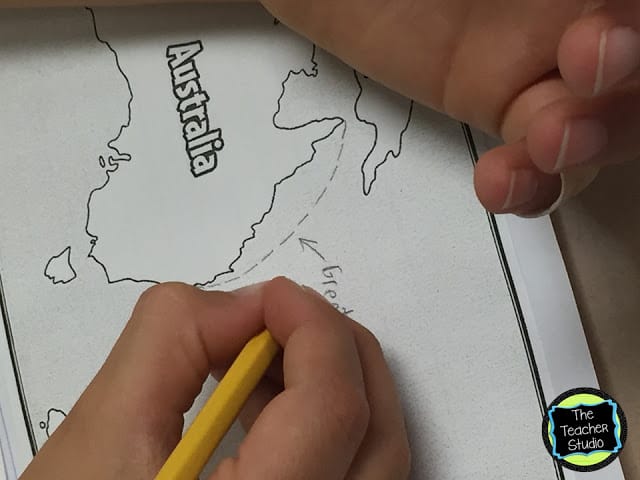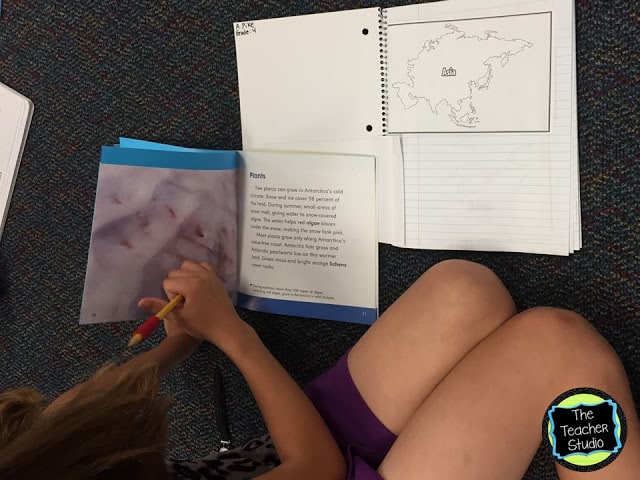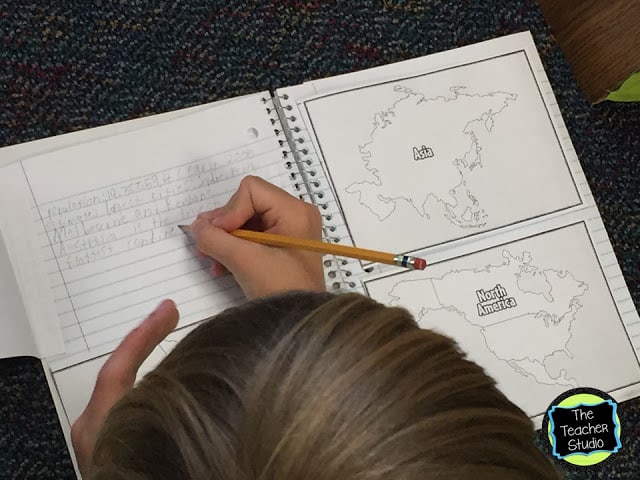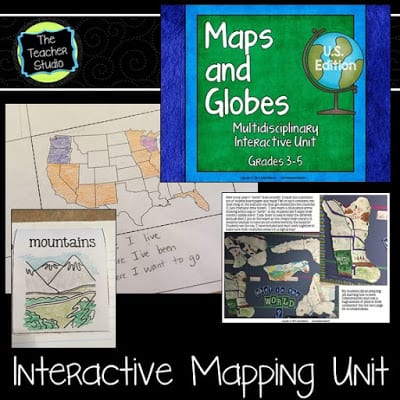One thing that has happened over the last few years is an increased focus on reading a balance of informational and fictional texts. We try to work in informational reading as often as possible–both with specific units and by weaving instruction and experiences into content whenever possible.
As we dig into our mapping unit, I wanted to see what kinds of experiences my students had with “informal research”–no real structure, just an “exploration” of sorts.
Here’s what I did. We are starting to talk about maps and globes (see the bottom of the post for my unit if you are interested in seeing more), so I gathered all the books in our library about the continents, printed off my interactive notebook continent flaps, and sat back and watched!
Here’s what I learned:
1. My students had a pretty good understanding of the “features” of informational text (thanks, primary teachers!). Students were able to list off lots of features of informational text and talk about how they help them understand and learn from what they read. Yay!
2. Another thing I learned is that many of my students REALLY enjoy the research process. The only direction I gave was to use the books to learn what they could about each continent–and to record their learning in their social studies notebooks. I was thrilled to see that many of my students spent the entire 45 minutes (we will do another 45 minutes Monday) digging into the books and really working to record key information. It was nice to see good stamina from so many so early in the year.
3. One thing that surprised me a little bit was that students didn’t seem to be grabbing information from the non-text areas of the books. Although they were able to LIST the many text features such as captions, maps, graphs, and so on–very few students were using these features to collect important information. Once I stopped the class and brought this to their attention, I started to see…
…students using the OUTSIDE of their flaps to record important geographical features, cities and so on.
4. Another thing I learned from watching my students do this informal research is that students struggle to determine what the most important information is (rather than “cool facts”) and also had a hard time recording ideas in their own words. I definitely have some great teaching points for our first unit!
5. One final thing I noticed during our informal research is that my students like to work together. Now–they aren’t always WORKING together, but they already have some nice collaborative skills as a foundation. I can’t wait to work to refine them so they can really and truly work productively. There were only a few students who seemed to prefer to work together; it was good to see this so I can help “coach” them in this area.
So…it was a great day of learning for ME–about what my students know about informational texts and research. I’m pretty confident that my students got something out of it too–they were genuinely excited to be digging into these books and were sharing cool learning with their classmates. It was a great kick off to the next stages of our mapping unit–with more specifics about world geography. If you are interested in seeing what else we will be doing during this unit, you can check it out here!


